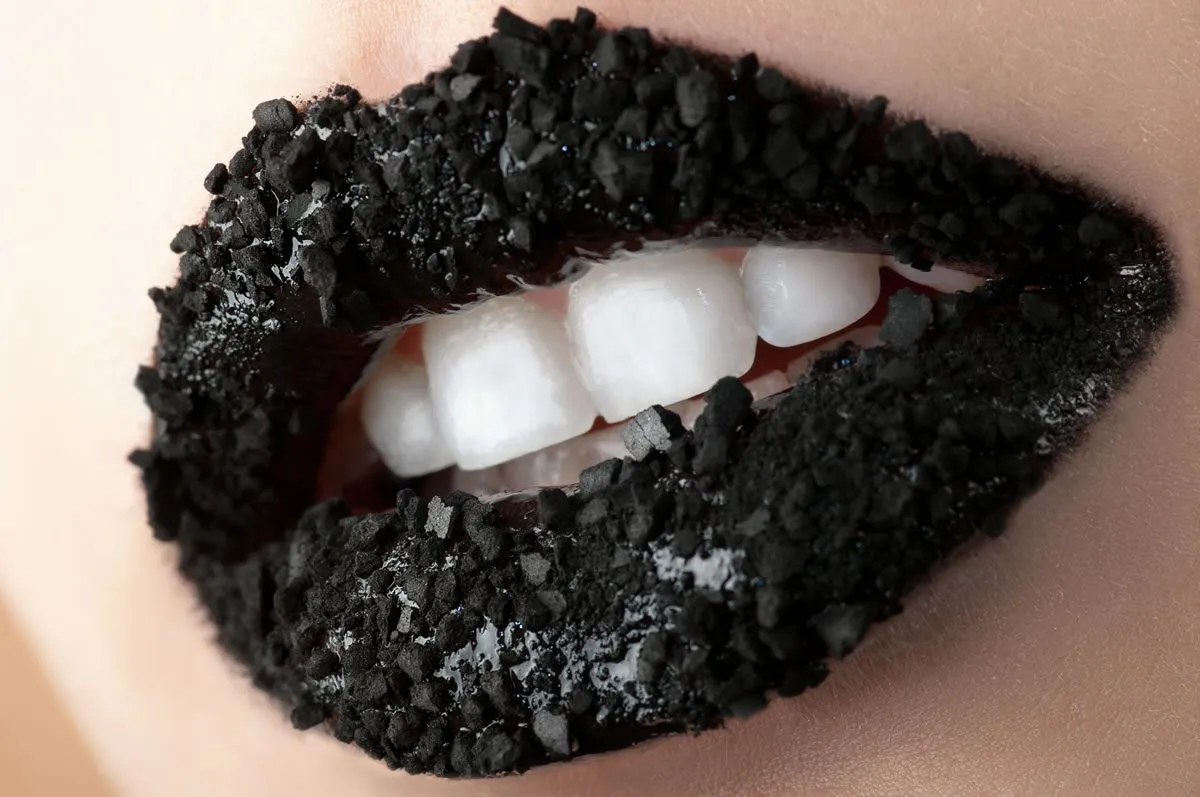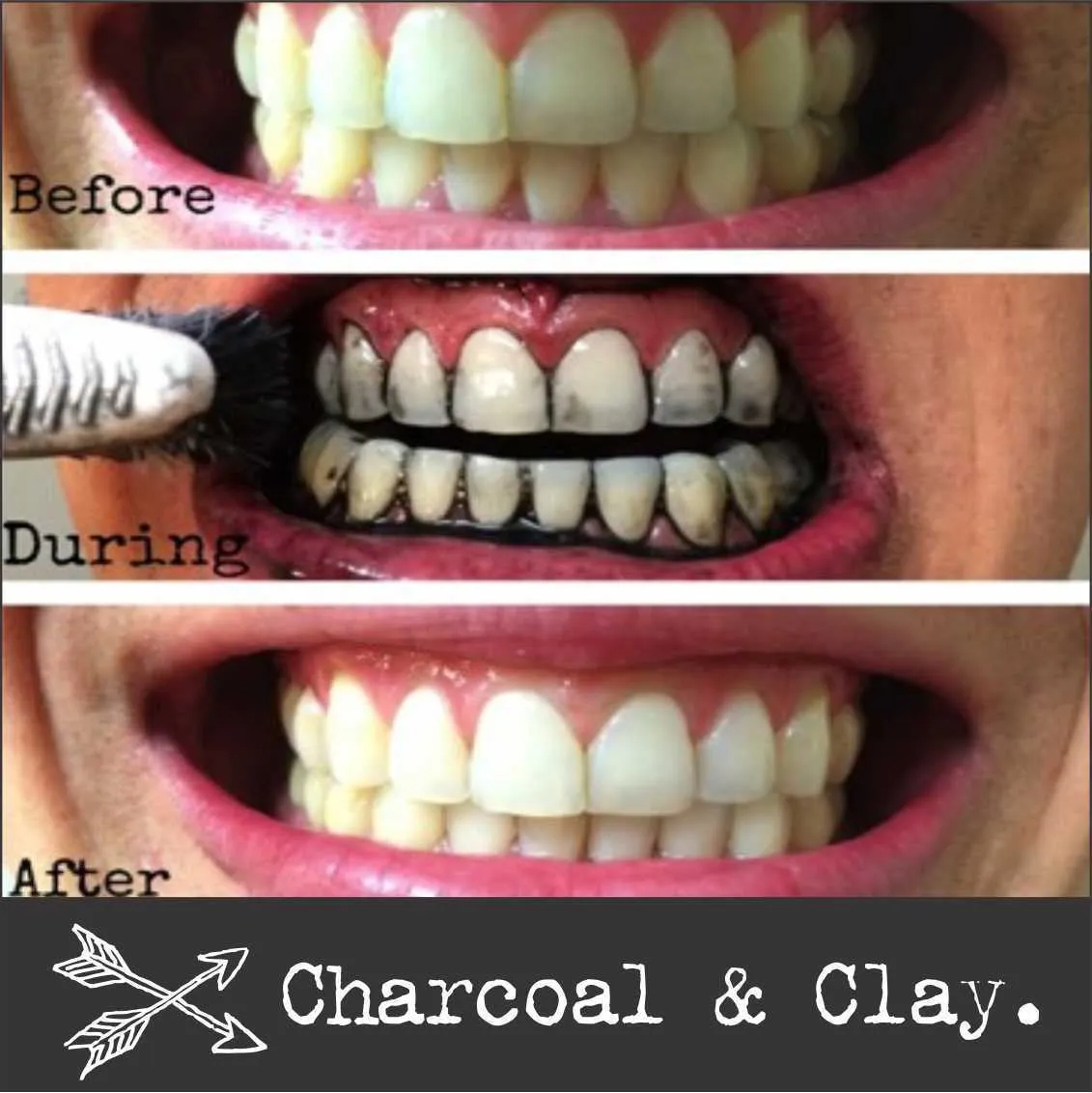What is Activated Charcoal Teeth Whitening?
Activated charcoal has surged in popularity as a natural method for teeth whitening. Derived from sources like coconut shells, wood, or peat, it undergoes a process of activation at high temperatures, rendering it highly porous. This porosity is the key to its purported benefits, as it’s believed to trap and remove stains and impurities from the teeth. Proponents of activated charcoal teeth whitening claim it’s a gentle, natural alternative to chemical-based whitening treatments. However, it’s essential to understand its workings and potential drawbacks before incorporating it into your oral hygiene routine. This blog post delves into the side effects and the pros and cons of using activated charcoal for teeth whitening, providing you with the information needed to make an informed decision about your dental care.
How Does Activated Charcoal Whiten Teeth?
The mechanism behind activated charcoal’s purported teeth-whitening effects is primarily based on its abrasive nature. The porous structure of the charcoal is thought to act like a mild abrasive, helping to scrub away surface stains caused by foods, drinks, and other substances. Users typically apply a charcoal paste to their toothbrush and gently scrub their teeth. This abrasive action is intended to remove extrinsic stains. The absorbent nature of activated charcoal also means it can attract and bind to stain-causing particles. It is important to note that the American Dental Association (ADA) does not recommend activated charcoal for teeth whitening because of the lack of scientific evidence supporting its efficacy and potential risks. Understanding how it supposedly works is only the first step; it is equally important to acknowledge the potential downsides.
Top 5 Side Effects of Activated Charcoal Teeth Whitening

While many people are attracted to the idea of a natural teeth-whitening solution, it is crucial to acknowledge the potential side effects of activated charcoal. Several dental professionals have voiced concerns about its long-term effects on oral health. The abrasive nature of activated charcoal can lead to enamel erosion, increased tooth sensitivity, and other issues. The following list details the five most significant side effects that you should be aware of before using activated charcoal.
Enamel Erosion
One of the most significant concerns associated with activated charcoal teeth whitening is enamel erosion. Enamel is the hard, protective outer layer of your teeth. It is not easily replaced. Activated charcoal, being abrasive, can wear down the enamel over time. When the enamel erodes, it exposes the underlying dentin, which is softer and more susceptible to decay. This erosion can lead to increased tooth sensitivity, cavities, and a yellowish appearance of the teeth as the dentin becomes more visible. The abrasive particles in activated charcoal can scratch the enamel surface, making it more vulnerable to stains in the future. It is essential to weigh the potential cosmetic benefits against the risk of damaging the enamel.
Tooth Sensitivity
As the enamel erodes due to the abrasive action of activated charcoal, the underlying dentin becomes exposed. Dentin contains tubules that lead directly to the nerve center of the tooth. When these tubules are exposed, the teeth become more sensitive to temperature changes, acidic foods, and even air. This sensitivity can cause discomfort and pain, making it difficult to enjoy hot or cold beverages and certain foods. If you experience increased tooth sensitivity after using activated charcoal, it’s a clear indication that your enamel may be wearing down, and you should discontinue its use immediately and consult your dentist. The severity of the sensitivity can vary from mild discomfort to intense pain, affecting your daily life.
Gum Irritation

The abrasive nature of activated charcoal can also irritate the gums. When used aggressively or with a hard-bristled toothbrush, it can cause gum inflammation, bleeding, and recession. Receding gums expose the roots of the teeth, which are not protected by enamel and are therefore more vulnerable to decay and sensitivity. The charcoal particles can get lodged in the gum line, further exacerbating irritation and potentially leading to infections. Proper brushing technique and the choice of a soft-bristled toothbrush are important regardless of what you use, but the abrasive nature of activated charcoal makes careful application all the more crucial. If you experience any gum irritation, stop using activated charcoal and consult with your dentist.
Staining and Discoloration
Paradoxically, activated charcoal can lead to staining and discoloration, rather than whitening. If the enamel is eroded, the underlying dentin becomes more visible, which is naturally more yellow than enamel. Additionally, the porous nature of activated charcoal can trap pigments from food and drinks, causing the teeth to appear stained or even darker. The charcoal particles can also settle into the microscopic crevices on the teeth’s surface, creating a mottled or uneven appearance. Regular use of activated charcoal may, therefore, have the opposite effect, making your teeth look less white and less attractive. It is also essential to note that the effectiveness of activated charcoal is limited to surface stains.
Ineffectiveness for Intrinsic Stains
Activated charcoal is only effective for removing extrinsic stains, which are surface stains caused by food, drinks, and tobacco use. It will not whiten teeth that have intrinsic stains, which are stains that are embedded within the tooth structure. These types of stains are often caused by factors like aging, genetics, certain medications, or dental trauma. Intrinsic stains require professional whitening treatments or other dental procedures to address them. Using activated charcoal on teeth with intrinsic stains will likely have no noticeable whitening effect and may still cause the other side effects previously discussed. It is therefore crucial to understand the type of stains you have before attempting any teeth whitening treatment.
Alternatives to Activated Charcoal Teeth Whitening

If you’re looking for a safe and effective way to whiten your teeth, there are several alternatives to activated charcoal. These options offer better results and minimize the risks associated with abrasive treatments. The best option depends on your specific needs and the type of stains you are trying to address. It is always advisable to consult with your dentist before starting any teeth-whitening regimen to ensure it is appropriate for your oral health.
Professional Teeth Whitening Options
Professional teeth whitening is performed by a dentist or dental professional and is often the most effective way to achieve significant whitening results. These treatments use stronger bleaching agents than over-the-counter products. There are two main types of professional teeth whitening professional in-office whitening and take-home whitening kits. In-office whitening involves the application of a high-concentration bleaching gel to the teeth, which is activated by a special light or laser. Take-home whitening kits involve custom-fitted trays and a bleaching gel that you use at home, under the supervision of your dentist. Both of these options can provide dramatic results and are considered safe when performed or supervised by a dental professional.
Maintaining Oral Health after Whitening
Regardless of the whitening method you choose, maintaining good oral health is crucial. Brush your teeth twice a day with fluoride toothpaste, floss daily, and visit your dentist for regular check-ups and cleanings. Avoiding staining foods and drinks, such as coffee, tea, red wine, and berries, can help preserve your teeth’s whiteness. If you do consume these items, rinse your mouth with water afterward. Using a straw for beverages can also minimize contact with your teeth. Regular dental check-ups and cleanings are essential to maintaining your oral health and the longevity of any teeth-whitening treatment you may undergo. This will help ensure that your teeth remain healthy and bright for many years to come.